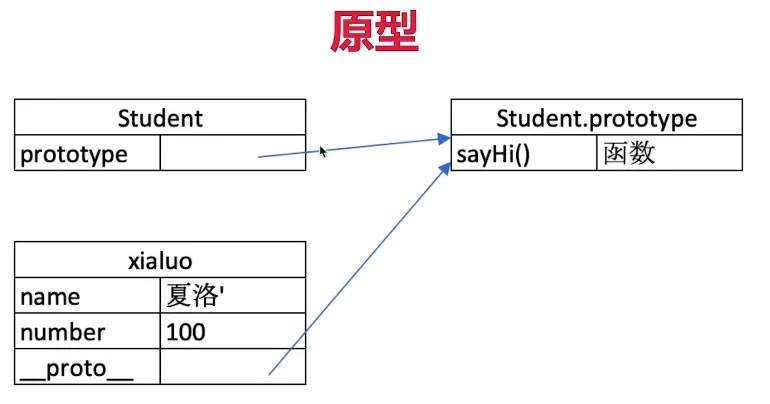如何理解 JS 原型(隐式原型和显示原型)三座大山之一
通过一些例子来说明,首先定义
class People {
constructor(name) {
this.name = name
}
eat(){
console.log(`${this.name} eat something`)
}
}
//子类
class Student extends People{
constructor(name,number){
super(name)
this.number = number
}
sayHi(){
console.log(
`姓名${this.name},学号${this.number}`
)
}
}
//实例化
const xialuo = new Student('夏洛',100)
console.log(xialuo.name,xialuo.number) //夏洛 100
xialuo.sayHi() //姓名夏洛,学号100
xialuo.eat() //夏洛 eat something
类型判断 - instanceof
console.log(xialuo instanceof Student) //true
console.log(xialuo instanceof People) //true
console.log(xialuo instanceof Object) //true
console.log([] instanceof Array) //true
console.log([] instanceof Object) //true
console.log({} instanceof Object) //true
class 的原型本质是什么?实�际上是函数,可见是语法糖
console.log(typeof People) //function
console.log(typeof Student) //function
原型
console.log(xialuo.__proto__) //隐式原型
console.log(Student.prototype) // 显示原型
console.log(xialuo.__proto__ === Student.prototype) // true

原型关系
- 每个 class 都有显示原型 prototype
- 每个实例都有隐式原型
__proto__ - 实例的
__proto__指向对应 class 的 prototype
基于原型的指向规则,获取属性或执行方法时
-
先在自身属性�和方法寻找
-
如果找不到则自动去
__proto__中查找